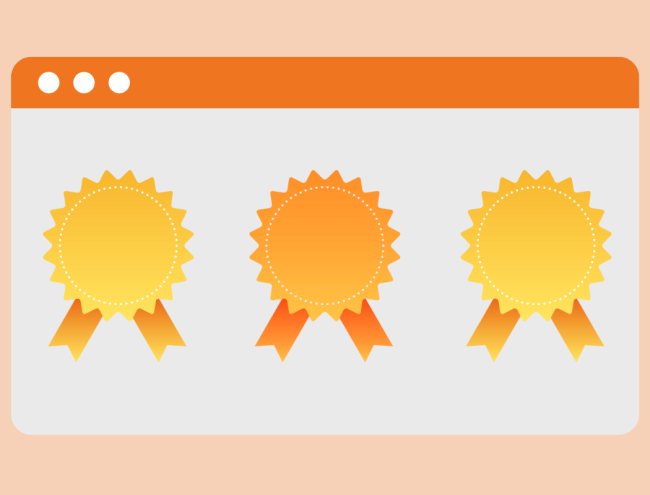You have /5 articles left.
Sign up for a free account or log in.

Professors can incentivize student learning and encourage them to take responsibility for their academics by offering additional learning resources and digital badging.
Ashley Mowreader | Inside Higher Ed
Digital badging continues to grow as a solution to bridge the skills gap between student learning with workforce needs. One professor included badges in her course, not to identify industry skills, but to provide equity and flexibility for learners.
Billi Bromer, professor of education at Brenau University in Georgia, teaches an online course for graduate students in the master of arts in teaching program. Introduction to Teacher Education doesn’t have a textbook but instead relies on a variety of resources.
Over the years, Bromer has added and removed resources from the curriculum, modifying the four-module outline to be most relevant. During the COVID-19 pandemic, for example, Bromer included information on teaching remotely and mitigating COVID in the classroom.
In the past year, Bromer became aware of a digital badging plug-in for Brenau’s learning management system and decided to weave additional content throughout the course with an incentive for students: to earn a badge and maybe some flexibility in points and due dates.
How it works: Brenau’s LMS, Canvas, offers a badging program through Badgr, in which professors can connect it to their courses and create customized badges based on learning materials.
After completing a module, Bromer’s students can complete an additional hour or two of work to earn a badge. Badge assignments could be to listen to a podcast and write a reflection or to explore an online resource page and outline what they learned in a one-page summary or as a creative infographic. Each badge has at least two activities.
The badges are named after the modules: students who complete “Innovations in Teaching” can earn the “I Will Be an Innovative Teacher” badge. Badges can be viewed on the student’s Canvas account, and they can compare their progress against their peers anonymously.

For the "I Will Be an Innovative Teacher" badge, students complete two assignments. First, students watch a webinar on National University's website for Harmony Social Emotional Learning and write a reflection. Then, they read a report titled PowerMyLearning Framework for Teachers and share their learnings.
Billi Bromer
Students can earn a badge at any point during the term at their own pace, and there’s no penalty for not earning a badge.
For those who complete badge assignments, Bromer offers an additional point toward the final grade or an extension on an assignment per badge.
The incentives: While badging is a fun and engaging way for students to learn more than the required content, it also benefits Bromer as the professor.
“Not all students can complete work on the same time frame as instructor-determined due dates require,” Bromer explains. “I want to accommodate individual needs while still providing equitable policies for all students regarding due dates and late submissions.”
The activities also give students a way to earn extra credit equitably throughout the term.
The impact: Badges benefit students’ learning outcomes and the professor’s ability to uphold academic rigor.
“An option such as digital badging keeps the professor neutral but supportive and puts the responsibility directly on the student to be in charge of his or her own success,” Bromer says.
Who completes badges varies by the student and their interests. Sometimes, students are worried about their final grade and will earn badges to get extra credit toward the end of the course. Other students might need an extension for one assignment deadline and complete just one badge. Some don’t complete any extra work.
“Students feel a sense of pride in having acquired a bit more information on a topic and seeing that they achieved a higher level of learning,” Bromer says, as another perk.
Because she teaches a graduate-level online class, there’s a wide range of student ages present, and Bromer finds there are generational differences in how students approach the course.
DIY: Bromer offers some insight for other faculty members looking to add digital badging to their courses. Instructors should consider:
- Using badges in points-based grading. Badging incentives work well for Bromer’s grading method, which adds up points earned on assignments, totaling to their final letter grade. In her class, students can recoup up to four unweighted points.
- Communicating what terms and conditions apply. With the badging model, Bromer doesn’t allow extensions to be universally applied. Discussion board posts happen in real time, so they’re exempt from the badge extension. Students cannot extend deadlines on assignments submitted in the final week of the course.
- Inspiring creativity. As future educators, using innovative software and badging solutions can be a resource for the students’ lives after college in addition to their present learning. Bromer is the only professor in her department using badging.
This story was submitted to us from a reader just like you! Share your student success initiatives with us here.




